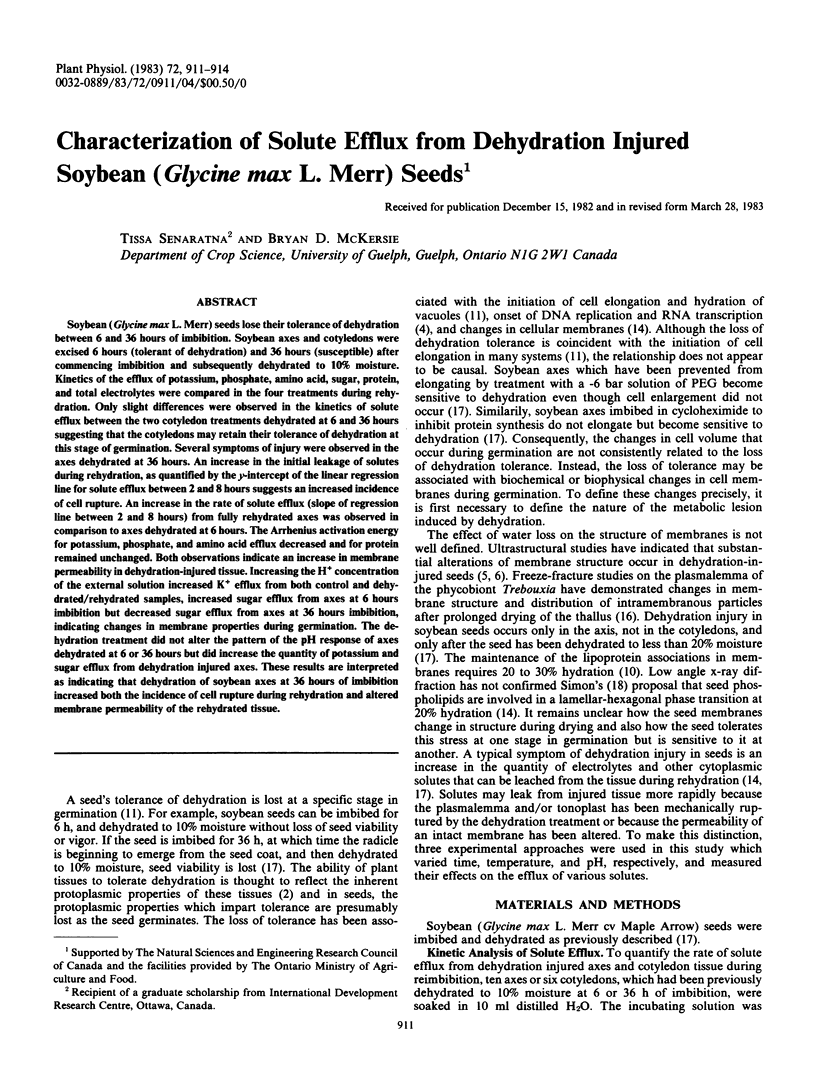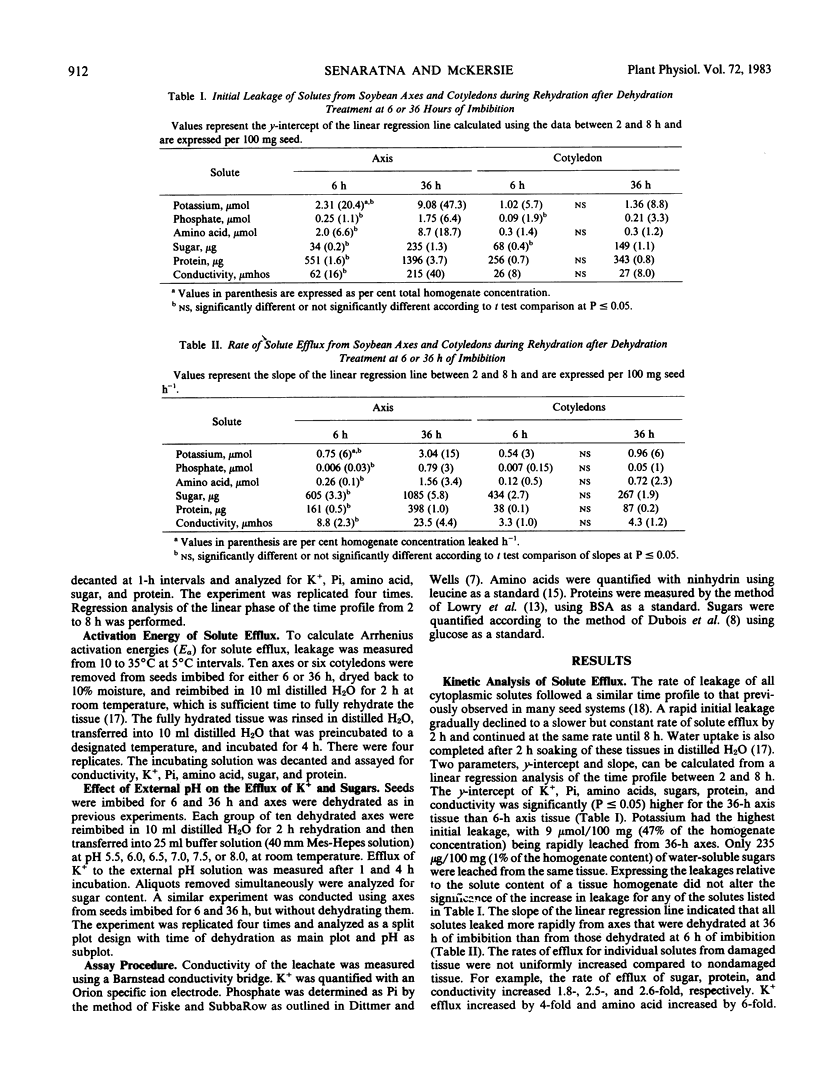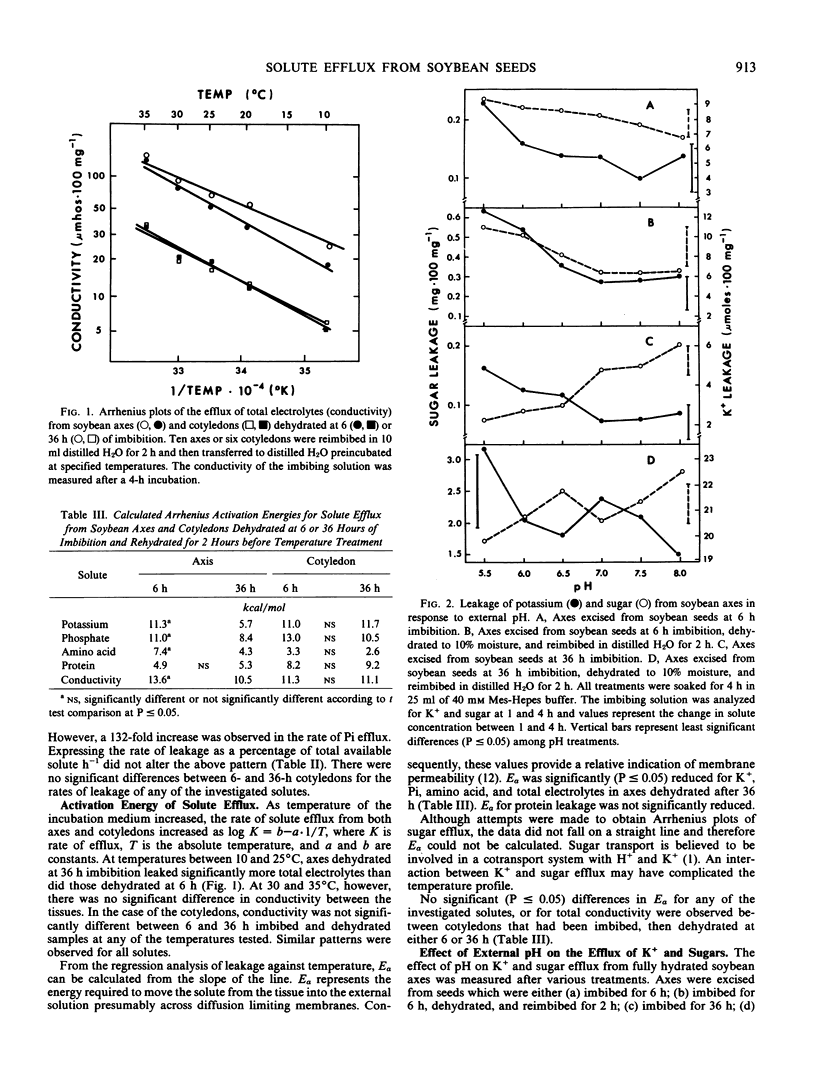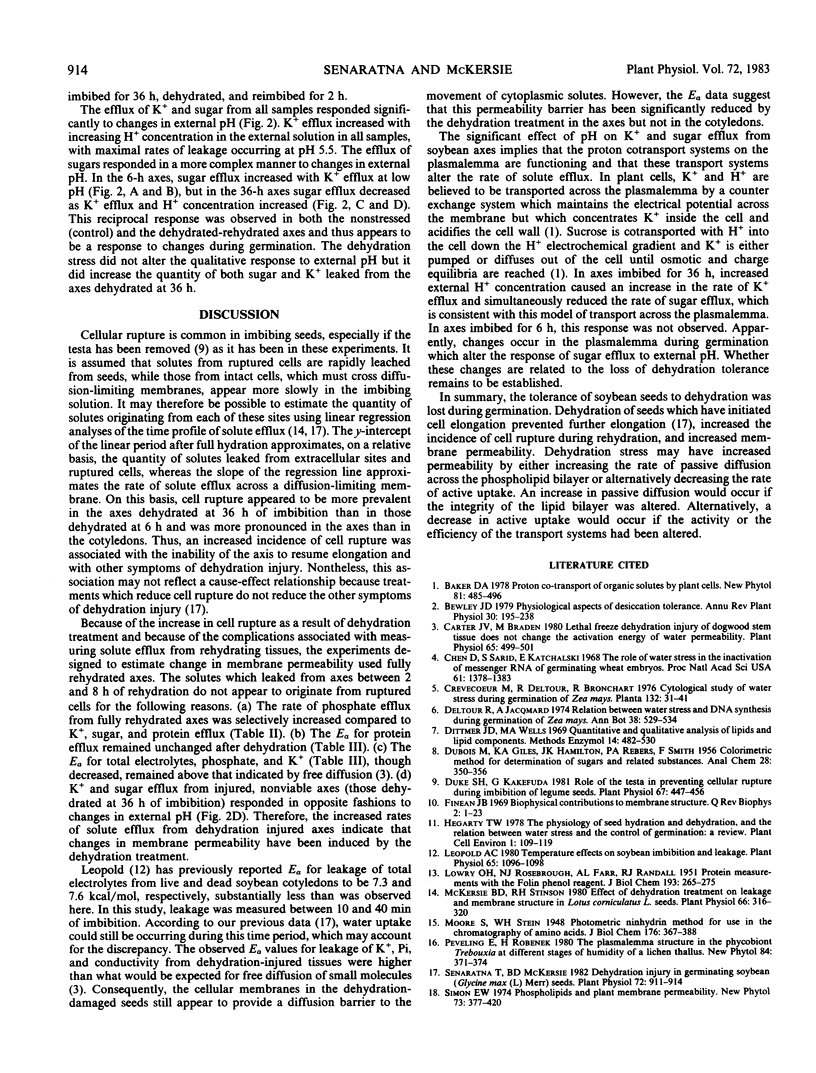Abstract
Soybean (Glycine max L. Merr) seeds lose their tolerance of dehydration between 6 and 36 hours of imbibition. Soybean axes and cotyledons were excised 6 hours (tolerant of dehydration) and 36 hours (susceptible) after commencing imbibition and subsequently dehydrated to 10% moisture. Kinetics of the efflux of potassium, phosphate, amino acid, sugar, protein, and total electrolytes were compared in the four treatments during rehydration. Only slight differences were observed in the kinetics of solute efflux between the two cotyledon treatments dehydrated at 6 and 36 hours suggesting that the cotyledons may retain their tolerance of dehydration at this stage of germination. Several symptoms of injury were observed in the axes dehydrated at 36 hours. An increase in the initial leakage of solutes during rehydration, as quantified by the y-intercept of the linear regression line for solute efflux between 2 and 8 hours suggests an increased incidence of cell rupture. An increase in the rate of solute efflux (slope of regression line between 2 and 8 hours) from fully rehydrated axes was observed in comparison to axes dehydrated at 6 hours. The Arrhenius activation energy for potassium, phosphate, and amino acid efflux decreased and for protein remained unchanged. Both observations indicate an increase in membrane permeability in dehydration-injured tissue. Increasing the H+ concentration of the external solution increased K+ efflux from both control and dehydrated/rehydrated samples, increased sugar efflux from axes at 6 hours imbibition but decreased sugar efflux from axes at 36 hours imbibition, indicating changes in membrane properties during germination. The dehydration treatment did not alter the pattern of the pH response of axes dehydrated at 6 or 36 hours but did increase the quantity of potassium and sugar efflux from dehydration injured axes. These results are interpreted as indicating that dehydration of soybean axes at 36 hours of imbibition increased both the incidence of cell rupture during rehydration and altered membrane permeability of the rehydrated tissue.
Full text
PDF



Selected References
These references are in PubMed. This may not be the complete list of references from this article.
- Carter J. V., Braden M. Lethal freeze-dehydration injury of dogwood stem tissue does not change the activation energy of water permeability. Plant Physiol. 1980 Mar;65(3):499–501. doi: 10.1104/pp.65.3.499. [DOI] [PMC free article] [PubMed] [Google Scholar]
- Chen D., Sarid S., Katchalski E. The role of water stress in the inactivation of messenger RNA of germinating wheat embryos. Proc Natl Acad Sci U S A. 1968 Dec;61(4):1378–1383. doi: 10.1073/pnas.61.4.1378. [DOI] [PMC free article] [PubMed] [Google Scholar]
- Duke S. H., Kakefuda G. Role of the testa in preventing cellular rupture during imbibition of legume seeds. Plant Physiol. 1981 Mar;67(3):449–456. doi: 10.1104/pp.67.3.449. [DOI] [PMC free article] [PubMed] [Google Scholar]
- Finean J. B. Biophysical contributions to membrane structure. Q Rev Biophys. 1969 May;2(1):1–23. doi: 10.1017/s0033583500000779. [DOI] [PubMed] [Google Scholar]
- LOWRY O. H., ROSEBROUGH N. J., FARR A. L., RANDALL R. J. Protein measurement with the Folin phenol reagent. J Biol Chem. 1951 Nov;193(1):265–275. [PubMed] [Google Scholar]
- Leopold A. C. Temperature effects on soybean imbibition and leakage. Plant Physiol. 1980 Jun;65(6):1096–1098. doi: 10.1104/pp.65.6.1096. [DOI] [PMC free article] [PubMed] [Google Scholar]
- McKersie B. D., Stinson R. H. Effect of Dehydration on Leakage and Membrane Structure in Lotus corniculatus L. Seeds. Plant Physiol. 1980 Aug;66(2):316–320. doi: 10.1104/pp.66.2.316. [DOI] [PMC free article] [PubMed] [Google Scholar]


